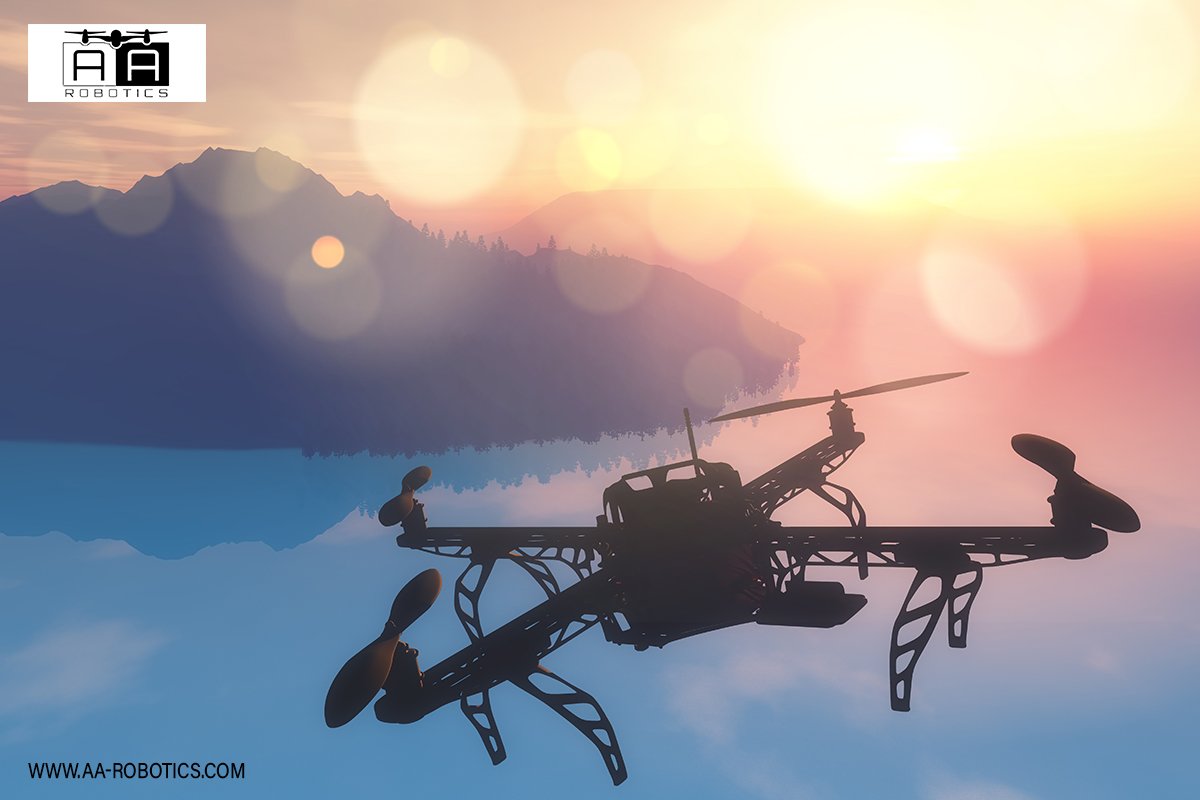
Best UAS For #1 Defense & Beyond Unmanned Skies
Unmanned Aerial Systems (UAS) are revolutionizing the way we explore, innovate, and navigate the skies. As the sun dips below the horizon, casting long shadows across a desolate desert landscape, a silent sentinel circles high above. Its sleek, elongated wings hum with the quiet efficiency of solar-powered flight, a stark contrast to the roar of fighter jets that once patrolled these skies. This is the future of aerial dominance, embodied in the cutting-edge technology of Unmanned Aerial Systems (UAS).
Gone are the days of clunky, fuel-guzzling drones buzzing erratically overhead. Today’s UAS come in a breathtaking array of shapes and sizes, from nimble UAV copters flitting through urban canyons to majestic UAV airplanes soaring at the edge of space. Whether known as UAS, UAV, or drones, these unmanned aircraft systems represent a transformative force in both the realm of defense and beyond.
For the military, UAS are more than just battlefield scouts; they are eyes in the sky, omnipresent guardians capable of penetrating enemy lines, gathering critical intelligence, and delivering precision strikes with unerring accuracy. However the impact of UAS extends far beyond the battlefield. From revolutionizing agriculture with precision crop monitoring to aiding in disaster relief efforts with rapid aerial surveys, these versatile machines are changing the game across countless industries.
The sky is no longer the limit; it’s the launchpad for a new era of innovation. As UAS technology continues to evolve, driven by advancements in AI, automation, and renewable energy, we can only imagine the possibilities that lie ahead. Imagine fleets of solar-powered drones delivering vital medical supplies to remote villages, or UAV airplanes acting as tireless guardians of our delicate ecosystems. The future belongs to those who dare to look up, and in the ever-expanding realm of unmanned skies, the potential is as boundless as the horizon itself.
Beyond Buzzwords: Understanding UAS, UAV, And Drone Differences
In the realm of aviation, the terms UAS (Unmanned Aerial Systems), UAV (Unmanned Aerial Vehicle), and drone are often used interchangeably, creating a cloud of confusion. However, a closer look reveals subtle yet significant differences. UAS encapsulates the entire unmanned system, comprising not only the aircraft (UAV) but also the ground control station and communication links.
UAV specifically refers to the aircraft itself, highlighting its autonomous or remotely controlled nature. Meanwhile, the term drone encompasses a broader spectrum, encompassing both recreational quadcopters and sophisticated UAV airplanes used for commercial or military purposes.
By understanding these distinctions, we gain insight into the diverse applications of Unmanned Aircraft Systems, ranging from surveillance and photography to scientific research and military operations. Navigating beyond buzzwords, a nuanced comprehension of UAS, UAV, and drone nomenclature proves essential in appreciating the multifaceted world of unmanned aviation.
From Toy To Titan: Choosing The Right UAS For Your Mission
Selecting the appropriate Unmanned Aerial System (UAS) is crucial, as the diversity within this technology spans from toy-like drones to robust UAV airplanes. The term UAS encompasses the entirety of unmanned aerial vehicles, including both UAVs and their supporting infrastructure. When delving into the decision-making process, it’s essential to recognize the specific requirements of your mission.
For recreational purposes or basic aerial photography, smaller UAV drones may suffice, offering user-friendly controls and portability. On the other end of the spectrum, missions demanding extended range, endurance, and specialized payloads may necessitate the implementation of more sophisticated UAV airplanes. By understanding the nuances of UAS, users can tailor their selection, ensuring a seamless alignment between the chosen unmanned system and the objectives at hand, transitioning from a mere toy to a titan in meeting mission demands effectively.
Soaring Above: Unveiling The Power Of ArduPilot
Embarking on the exploration of Unmanned Aerial Systems (UAS) is an exhilarating journey, and at the heart of this adventure lies the transformative technology of ArduPilot. As a pivotal component in the world of UAV drones and airplanes, ArduPilot emerges as an open-source autopilot platform, empowering enthusiasts and professionals alike.
Supporting both UAV drones and UAV airplanes, ArduPilot’s versatility unveils a spectrum of capabilities, from precise navigation to mission planning and data collection.
The platform’s open-source nature fosters a collaborative community, driving continuous innovation and adaptability. Users harness the power of ArduPilot to elevate their unmanned systems, enabling autonomous flights, diverse applications, and the seamless integration of cutting-edge features. So, as we explore the boundless skies, ArduPilot stands as a beacon, exemplifying the synergy between technology and the art of flight within the realm of Unmanned Aerial Systems.
Unmanned Guardians: Top UAS For Military And Defense
In the realm of military and defense, Unmanned Aerial Systems (UAS) have emerged as invaluable assets, evolving from UAV drones to sophisticated UAV airplanes. UAS, a collective term encompassing both the unmanned aircraft (UAV) and the supporting systems, redefines the landscape of surveillance, reconnaissance, and strategic operations.
These Unmanned Aircraft Systems serve as vigilant guardians, offering capabilities ranging from real-time intelligence gathering to precision strikes. UAV drones, with their agility and adaptability, prove instrumental in dynamic tactical scenarios, while UAV airplanes, designed for endurance and specialized missions, extend the reach and effectiveness of military operations.
The seamless integration of UAS technology provides military forces with enhanced situational awareness and strategic advantages, shaping the future of defense by entrusting critical tasks to these unmanned guardians of the skies.
Beyond Boot Camp: Civilian Applications Of Cutting-Edge UAS
Unmanned Aerial Systems (UAS) are transcending their military origins, finding innovative applications in civilian domains. Moving beyond the stereotypical image of UAV drones, these cutting-edge technologies, encompassing both UAV airplanes and drones, are reshaping industries.
In agriculture, UAS offers precision farming solutions, monitoring crops, and optimizing resource utilization. Conservation efforts benefit from UAV airplanes, conducting aerial surveys, and wildlife monitoring. In infrastructure inspection, UAS navigates complex structures with efficiency and safety. Meanwhile, UAV drones are revolutionizing emergency response, delivering medical supplies, and assessing disaster-stricken areas.
From filmmaking to environmental research, the versatility of Unmanned Aircraft Systems is unlocking new possibilities. As UAS continues to evolve, their civilian applications redefine the boundaries of what’s achievable, proving that beyond the confines of boot camps, these aerial technologies are catalysts for progress across diverse fields.
Conquering The Skies: UAV Airplane Supremacy
In the ever-expanding realm of Unmanned Aerial Systems (UAS), the UAV airplane emerges as a symbol of aerial supremacy, navigating the skies with precision and purpose. Distinct from the nimble UAV drones, UAV airplanes are the stalwarts designed for endurance, extended range, and specialized missions.
Their robust capabilities make them pivotal in various sectors, including military reconnaissance, scientific research, and commercial applications. Equipped with cutting-edge technology, these aerial giants redefine the possibilities of unmanned flight, showcasing efficiency and reliability. UAV airplanes, often autonomous and remotely operated, excel in scenarios that demand persistence and versatility.
As they conquer the skies, the UAV airplane’s dominance extends beyond the conventional, charting new frontiers in exploration, surveillance, and beyond. In the symphony of Unmanned Aircraft Systems, the UAV airplane stands as a testament to the evolution and supremacy of unmanned aviation.
The Future Of Unmanned Aircraft Systems Is Autonomous
As technology propels the evolution of Unmanned Aircraft Systems (UAS), autonomy emerges as the driving force shaping their future. This paradigm shift extends beyond the familiar UAV drones and UAV airplanes, encompassing the entire spectrum of Unmanned Aerial Systems.
Autonomous UAS heralds a new era of efficiency, safety, and versatility. These systems, equipped with advanced sensors and artificial intelligence, navigate complex environments, execute missions, and adapt to dynamic scenarios independently. The potential applications are vast, from precision agriculture and infrastructure inspection to emergency response and scientific exploration.
Autonomy in UAS not only enhances operational capabilities but also ensures adaptability to emerging challenges. As we look ahead, the trajectory of Unmanned Aircraft Systems is undeniably autonomous, ushering in an era where intelligent and self-guided UAS redefine the possibilities of unmanned flight.
More Than Machines: The Ethical Considerations Of Unmanned Flight
The rise of Unmanned Aerial Systems (UAS) prompts a critical reflection on the ethical dimensions inherent in UAV drones and UAV airplanes. Beyond their technological marvels, UAS operates within a complex web of moral considerations. Privacy concerns arise as UAV drones become ubiquitous and capable of capturing high-resolution imagery.
Ethical questions also emerge in military applications, where unmanned aircraft systems are integral to surveillance and combat. Moreover, issues surrounding accountability and transparency in decision-making algorithms highlight the need for responsible governance. Striking a balance between the benefits of UAS and the potential ethical pitfalls becomes paramount.
As we navigate the skies with these Unmanned Aircraft Systems, it is imperative to foster an ongoing dialogue about the ethical implications, ensuring that our technological advancements in unmanned flight align with ethical standards and societal values. In the pursuit of excellence, the best UAS not only ensures national security but also holds the key to unlocking a myriad of possibilities in realms as diverse as research, commerce, and environmental stewardship, propelling us into a future where the skies are no longer limits but gateways to unparalleled achievements.
Conclusion
Navigating the vast expanse of unmanned skies demands the precision and prowess of the best UAS available for defense and beyond. The dynamic landscape of Unmanned Aerial Systems (UAS), encompassing both UAV Drones and UAV Airplanes, charts new frontiers in security and innovation. As we explore the potential of these Unmanned Aircraft Systems, the imperative is clear: the integration of cutting-edge technology for defense applications must extend into civilian realms, fostering advancements in agriculture, emergency response, and beyond. The synergy between UAV Drones and airplanes, collectively forming UAS, exemplifies the evolution of unmanned flight.
.
.
Which aspect of the ever-expanding realm of Unmanned Aerial Systems intrigues you the most, and how do you envision their impact on the future?



2 Comments
Yasmin
Appreciate the recommendation. Let me try it out.!